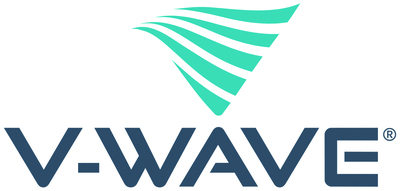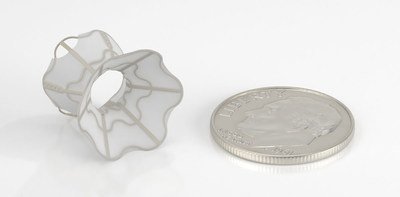Results presented at ACC.24 showed that overall neutral results were due to directionally opposite effects in patients with reduced vs. preserved left ventricular ejection fraction
Heart failure patients with reduced ejection (HFrEF) had 45% fewer adverse cardiovascular events, whereas patients with heart failure with preserved ejection fraction (HFpEF) had more adverse cardiovascular events with shunting
No procedure- or device-related major adverse cardiovascular or neurological events (MACNE) were reported in patients throughout the duration of the study to 24 months
AGOURA HILLS, Calif., April 6, 2024 /PRNewswire/ — V-Wave Inc., a privately held medical device company, today announced primary results from the RELIEVE-HF pivotal trial (NCT03499236) of its Ventura® Interatrial Shunt. The study evaluated patients with advanced heart failure (HF) and any left ventricular ejection fraction (LVEF) who were at high risk for cardiovascular morbidity and mortality events. The trial was designed as a multicenter, double-blind, randomized, controlled study in which patients were assigned 1:1 to receive either the interatrial shunt device or a control placebo procedure. Patients and caregivers were blinded to treatment assignment for the duration of the study up to 2 years. To be eligible, patients were required to have multiple risk factors for poor outcomes and be symptomatic despite treatment with maximally tolerated guideline-directed medical and device therapies. The study was performed under the U.S. Food and Drug Administration’s Breakthrough Devices Program and randomized 508 patients at 94 hospitals in 11 countries, including the U.S., EU, Israel, Australia and New Zeeland. A supermajority (96%) of the patients were highly disabled with New York Heart Association (NYHA) Class III symptoms.
Randomization was stratified so that the 206 patients with reduced ejection fraction (HFrEF; LVEF ≤40%) and 302 patients with preserved ejection fraction (HFpEF; LVEF >40%) were equally assigned to shunt or control treatment. It was pre-specified that each LVEF subgroup would be analyzed separately if results differed in the two subgroups.
The trial met its primary safety endpoint. There were no (0%) major adverse cardiovascular or neurological events (MACNE) during the first 30 days and no such events to 24 months. All 250 (100%) patients assigned to receive a shunt did so successfully. Overall, the primary effectiveness endpoint was neutral, neither showing shunt-related benefit or harm. Analysis of the LVEF subgroups showed this was due to directionally opposite effects in the HFrEF vs. HFpEF patients. Shunt implantation in HFrEF patients was associated with a 45% decrease in cardiovascular events including death, need for left ventricular assist device (LVAD) implantation or heart transplantation, recurrent HF hospitalizations, and worsening outpatient HF events (P<0.0001), indicating that these results are unlikely to be due to chance. Favorable trends were seen for each of these cardiovascular event types, led by a 52% reduction in hospitalizations for HF. In contrast, shunt implantation in HFpEF patients was associated with an increase in these cardiovascular events.
The RELIEVE-HF data was presented today by Gregg W. Stone, M.D., one of the principal investigators and professor of medicine, cardiology and population health sciences at the Icahn School of Medicine at Mount Sinai and director of academic affairs for Mount Sinai Heart, during the Late-Breaking Clinical Trials session at the American College of Cardiology (ACC) Annual Scientific Session & Expo in Atlanta.
“The RELIEVE-HF data are groundbreaking for the field of heart failure. Although the primary endpoint was not met, the study showed impressive results with interatrial shunting in patients with HFrEF but also definitively showed that this is not the right treatment for those who had HFpEF in our study,” said Dr. Stone. “Study participants were all on maximally tolerated guideline-directed medical therapy, yet those with HFrEF still experienced a 45% decrease in adverse cardiovascular events. The primary safety endpoint for the study was clearly met, as no study participant experienced a device-related or procedure-related safety event up to 2 years after implantation.”
“V-Wave is the first company in the field of interatrial shunting to comprehensively study patients with both HFrEF or HFpEF in a randomized clinical trial,” said Neal Eigler, M.D., chief executive officer of V-Wave. “Up until now, the field has mainly focused on HFpEF. Our results show the importance of performing best-quality, double-blind, controlled trials with stratified randomization to answer complex clinical questions as they bring assurance that the results are not likely due to chance. Despite the availability of approved treatments for patients with HFrEF, innovative approaches are still needed and, as RELIEVE-HF shows, are possible. Between the U.S. and the EU, there are 2-3 million HFrEF patients with NYHA Class III symptoms. These patients have a prognosis worse than many cancers and few remaining options. This places a terrible burden not only on patients but also on their families and the healthcare system. We are excited by the RELIEVE-HF results showing that the Ventura Interatrial Shunt improved heart failure hospitalizations and other study endpoints in patients with HFrEF, suggesting that our investigational device could potentially address those needs.”
About Heart Failure
Heart failure (HF) is a chronic, progressive disease in which the heart cannot pump enough blood to meet the body’s needs. HF affects 7 million people in the U.S, where it is a leading cause of death and hospitalization, and 56 million people globally. When HF occurs, there is an increase in left atrial pressure, which causes fluid to back up in the lungs. This causes pulmonary congestion and makes it hard to breathe during activities or even at rest. In addition to shortness of breath, symptoms include fatigue, rapid weight gain due to fluid retention, and swollen legs and feet.
There are two types of HF. HFpEF is HF with preserved ejection fraction in which pressure builds up in the heart and lungs due to stiffening of the heart muscle. This type of HF is largely associated with obesity and hypertension. HFrEF is HF where the left ventricle, the main pumping chamber of the heart, is weakened, enlarged and can’t effectively pump oxygen-rich blood to the body. HFpEF and HFrEF each make up about half of the HF population. Despite decades of advances in medical and device therapies, the 5-year mortality rate for each type of HF remains approximately 50%.
About the V-Wave Ventura® Interatrial Shunt
The V-Wave Ventura Interatrial Shunt is an investigational device that is implanted through a catheter inserted in a vein in the leg during a minimally invasive procedure. The Ventura Shunt is designed to offer a safe approach to treat HF by reducing elevations in left atrial pressure. Its novel, hourglass design optimizes the efficiency of blood flow, allows the possibility of future transseptal procedures, and keeps it firmly in place. Its biocompatible expanded polytetrafluoroethylene (ePTFE) encapsulation is designed to limit tissue growth and allow it to stay open and unobstructed. The V-Wave Ventura Interatrial Shunt has been granted Breakthrough Device Designation by the U.S. Food and Drug Administration.
About V-Wave
V-Wave is a privately held medical device company that was established in 2009 and is focused on developing innovative treatment options for people living with heart failure and cardiovascular disease. The company was built on a foundation of science, engineering and medicine and has decades of experience in these fields. The company has offices in Israel and the U.S. For more information, please visit www.vwavemedical.com or V-Wave on LinkedIn.
Forward-Looking Statement
This press release contains certain forward-looking statements that involve risks and uncertainties, including statements related to clinical development and potential regulatory approval of V-Wave’s products. All forward-looking statements and other information included in this press release are based on information available to V-Wave as of the date hereof, and the Company assumes no obligation to update any such forward-looking statements or information. The company’s actual results could differ materially from those described in the company’s forward-looking statements.
CAUTION, the V-Wave Ventura Interatrial Shunt System is not available for sale in the United States or other countries. Limited by Federal (or United States) law to investigational use.
Contact
Elliot Fox, Real Chemistry
[email protected]
207-604-0956
![]() View original content to download multimedia:https://www.prnewswire.com/news-releases/v-wave-announces-late-breaking-primary-results-from-pivotal-double-blind-randomized-controlled-relieve-hf-trial-of-the-ventura-interatrial-shunt-showing-reduced-clinical-events-in-advanced-heart-failure-patients-with-reduced-l-302109748.html
View original content to download multimedia:https://www.prnewswire.com/news-releases/v-wave-announces-late-breaking-primary-results-from-pivotal-double-blind-randomized-controlled-relieve-hf-trial-of-the-ventura-interatrial-shunt-showing-reduced-clinical-events-in-advanced-heart-failure-patients-with-reduced-l-302109748.html
SOURCE V-Wave Ltd.

Featured image: ©




